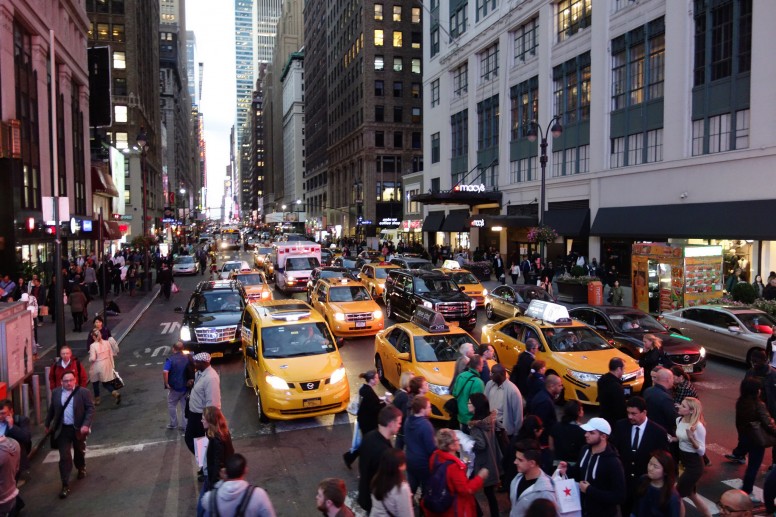Before we cozy up on the subway or go for a dip in Penn Station this holiday weekend, we’d like to remember that for all the things we’re thankful for, plenty more work remains to be done.
We’d be more thankful if…
New Jersey Department of Transportation followed through on its Complete Streets Policy — NJDOT adopted its Complete Streets policy back in 2009, but lately, it has allowed local pushback to hinder its full potential.
Camden worked harder to implement its Sustainability Ordinance — Rather than rubber-stamping car-oriented, suburban-style office development, Camden should require quality pedestrian, bike and transit connections to all its new job centers.
New York City bike lanes were recognized as legitimate traffic lanes — Keeping bike lanes clear of drivers proves quite difficult when the people who are supposed to be enforcing them are part of the problem.
Plaza33 were reconstructed permanently — The plaza on 33rd Street between Seventh and Eighth Avenues provided a much-needed refuge for Midtown pedestrians and Penn Station commuters, but it only lasted for three months.
On-street parking were appropriately priced in New York City — NYC is home to some of the most expensive real estate, but it costs nothing to park a vehicle on most streets in the five boroughs.
Connecticut Governor Dannel Malloy would scrap widening proposals on I-95 and I-84 — If Connecticut wants to retain millennials and avoid becoming an economic cul-de-sac, it needs to invest in transit–not wider roads.
The Port Authority’s board were more diverse — Not only does the Port Authority’s Board of Commissioners lack any women or people of color, it also lacks any expertise in transportation.
Connecticut’s transportation funds were secure — It’s hard to plan transportation projects when you don’t know if you’ll have enough money.
New Jersey’s Transportation Trust Fund weren’t completely bankrupt — It’s also hard to plan transportation projects when you do know you won’t have enough money.
New Jersey Governor Chris Christie applied the same conditions to transit hikes as he did to gas tax increases — This year, Governor Christie allowed a 9 percent transit fare hike while ruling out any gas tax increase.
New York Governor Andrew Cuomo would adhere to his own transit funding lockbox law— After some pushing by NYC leaders and transit advocates, Governor Cuomo agreed not to divert any funds from the MTA’s 2015-2019 capital program, but left the door open for raiding funds that pay for previous capital programs.
Congress would recognize that its transportation investment is an international embarrassment — Imagine if Congress would quit scraping together bits of funding and dithering about the federal gas tax, and actually make some serious investments in the nation’s crumbling infrastructure with dedicated, secure funding.
Transit, pedestrian and bicycle funding were part of the upstate “parity” rallying cry — Upstate leaders were quick to argue for their share of the five-year $29 billion MTA capital plan to cover road and bridge repairs, but failed to mention likewise improvements to transit, pedestrian and biking infrastructure.
New York State Department of Transportation would replace I-81 in Syracuse with a boulevard — The 1.4-mile elevated section of I-81 bisecting downtown Syracuse is nearing the end of its useful life, giving NYSDOT the opportunity to right this wrong.
New York didn’t have the highest share of pedestrian and bicyclist deaths in the nation — Bicyclists and pedestrians make of 29 percent of all traffic deaths in New York–the highest percentage of any state.
Queens electeds would rally behind Move NY, instead of stand in its way — Most Queens residents don’t work in Manhattan, and the tiny fraction of those who commute via car to Manhattan’s central business district stand to benefit from less congestion.
Reporters would stop using the term “accident” — Calling a car crash an “accident” is more than just inaccurate: it suggests nothing could have been done to prevent it from happening.
New Jersey had a safe passing law — Another year has passed without the passage of a bill to require motorists to give a four-foot buffer when passing people walking and biking.

